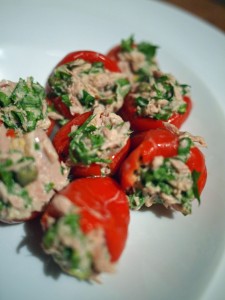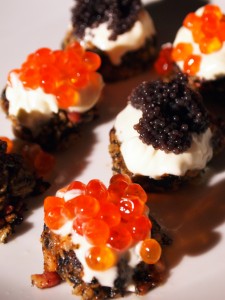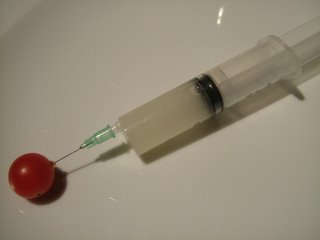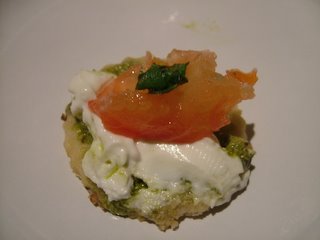
They sell something very similar to these in one of my local delicatessens, but rather more mayonnaise-y – and they sell them for about £1 per pepper, which is a simply amazing markup when you consider that a whole jar of the things, unstuffed, will only cost you about £2.50. Add a small can of tuna and a few ingredients which you probably have in the fridge already, and you’ve got (if you’re making them at home) a very inexpensive and very easy canapé, which you can make well in advance of any party you might be serving them at.
I spent years under the illusion that Peppadews (a brand name rather than a botanical name) were some sort of fruit which wasn’t related to the chilli. I think that perhaps I was a victim of some 1990s marketing. They’re actually a round chilli pepper, which grows in the Limpopo region of South Africa (cue chants of “great, grey-green, greasy Limpopo river” from all those of us who absorbed Kipling’s Just So stories at our mothers’ knees), and is processed to remove the seeds, then preserved in a sweet pickling mixture. Removing the seeds reduces the chilli’s heat, and it also leaves a nice, tidy hole in the top of the chilli which is just right for pushing stuffing into.
You want something salty, savoury and assertive in a stuffing here, that won’t get overwhelmed by the sweet and strong fruitiness of the chillies. Tinned tuna and capers are a really good match here. To fill a jar of little chillies (which will serve 4-6 as a nibble with drinks), you’ll need:
1 jar Peppadew peppers
1 small can tuna
Juice of ½ lemon
1 heaped tablespoon crème fraîche
1 stick celery, cut into tiny dice
½ shallot, cut into tiny dice
1 tablespoon capers, drained
2 heaped tablespoons chopped parsley
Easy as anything: just mix everything except the Peppadews thoroughly in a bowl, and use a teaspoon to stuff the peppers with the mixture. Chill before serving.



